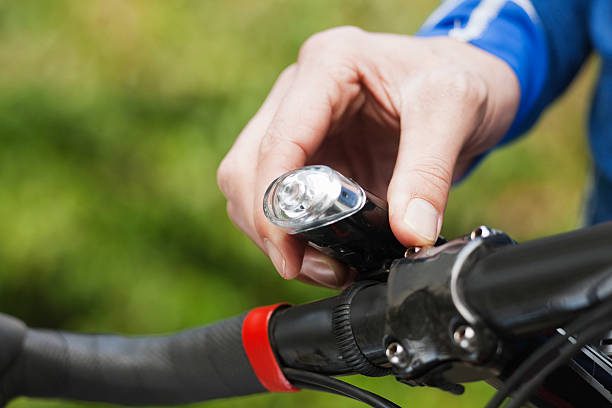Illuminating the Path Ahead: A Comprehensive Guide to Electric Bike Lights
Electric bikes (e-bikes) are becoming increasingly popular for commuting, exercise and recreation. However, riding an e-bike at night or in low light conditions can be dangerous without proper lighting.
This comprehensive guide covers everything you need to know about e-bike lights to keep you safe and seen.
Types of E-Bike Lighting
There are three main types of lights used on e-bikes: LED, halogen, and xenon.
LED Lights
LED, or light emitting diode, lights are the most common choice for e-bikes today. Reasons to choose LED bike lights include:
- Energy Efficiency – LEDs use very little electricity, putting less drain on your e-bike’s battery. They last for up to 100,000 hours before needing replacement.
- Brightness – LEDs provide very bright illumination. LED headlights and taillights allow other road users to see you clearly.
- Light Color – LEDs emit a crisp white or bluish light compared to the yellowish tint of halogens. This makes road hazards and obstacles easier to identify.
- Durability – Solid-state LEDs can withstand vibration and impacts without damage.
- Cool Operation – LEDs produce very little heat compared to other bulb types, reducing fire risks and component damage.
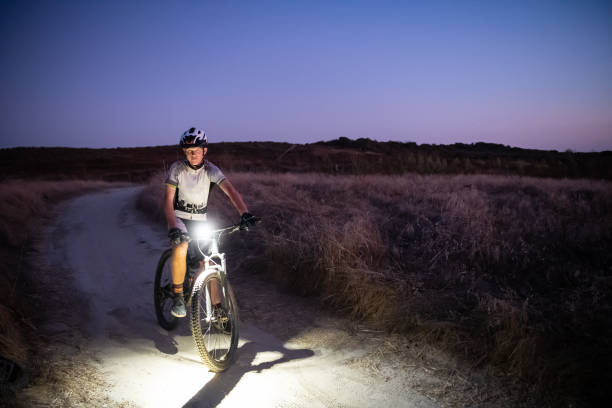
Halogen Lights
Many stock e-bikes come equipped with halogen lights. Benefits of halogens include:
- Low Cost – Halogen bulbs are an inexpensive lighting option for basic visibility needs.
- Good Light Output – Halogens emit reasonably bright light for their small size and power draw.
- Easy Replacement – No special tools needed to swap out halogen bulbs.
Downsides of halogen bike lights include:
- Short Lifespan – Most halogen bulbs last 500-1000 hours before burning out. Frequent replacement needed.
- Power Inefficiency – Halogens waste more battery energy as heat than LED alternatives.
- Fragile Glass Bulbs – Impacts can easily break the pressurized glass halogen capsule.
Xenon Strobe Lights
Xenon strobes produce an extremely bright bluish-white light in pulses, making them ideal safety lights:
- Maximum Visibility – At around 100 times the brightness of a standard halogen, xenon strobes are the best way to get noticed. The intense flashing beam stands out even in daylight.
- Distance Visibility – Xenon strobe beams can be seen over 1 km away, greatly improving rear visibility to vehicles approaching from behind.
Tradeoffs with xenon strobe bike lights include:
- Limited Battery Life – Average just 100-300 hours in strobe mode before burning out.
- Power Draw – Drain more battery than LEDs to achieve the high light intensity.
- Distracting to Others – The startling pulse may momentarily blind oncoming bike and vehicle traffic.
So in summary, LED lights offer the best all-around performance for most e-bikes, while xenon strobes excel when maximum visibility is essential. Halogens can serve for basic lighting needs if cost is the priority.
E-Bike Light Brightness
The brightness of bike lights is measured in lumens. More lumens equals a more intense beam. Here are some guidelines on e-bike light brightness:
Front E-Bike Lights
- Over 1500 Lumens – High-powered long-range LED headlights designed for mountain biking and off-road use. Useful for high speeds.
- 800 to 1500 Lumens – Bright enough to illuminate country roads. Good for riding up to 48 km/h.
- 400 to 800 Lumens – Ideal for neighborhood and urban riding up to speeds of 32 km/h. Allows you to identify road hazards well ahead.
- Under 400 Lumens – Okay for casual riding under 25 km/h speeds. Enables basic visibility of the road immediately ahead.
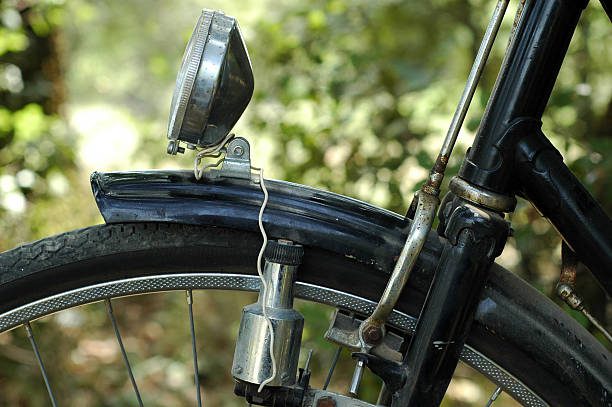
Rear E-Bike Lights
- 50+ Lumens – Excellent visibility from vehicles approaching from behind. The bright pulse catches drivers’ attention.
- 15 to 50 Lumens – Provides good visibility at night. Handy as an additional “be seen” light.
- Under 15 Lumens – Bare minimum output for basic safety visibility from the rear.
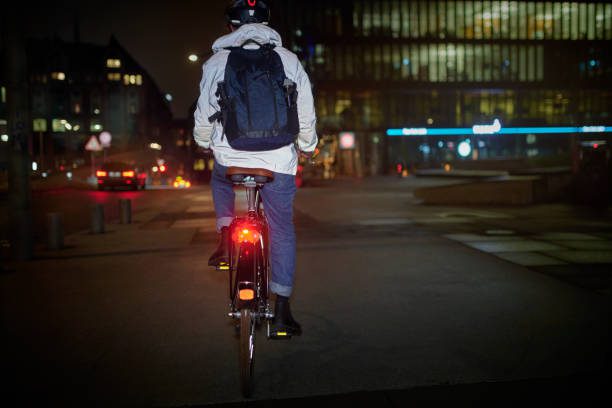
So choose an e-bike light brightness appropriate for your riding speed and conditions. Brighter isn‘t necessarily better – too dazzling a strobe can momentarily blind oncoming bikes and cars.
Beam Pattern and Beam Distance
The beam pattern and distance that an e-bike light illuminates is also important. Wider beams light up peripheral areas better while narrower long-throw beams reach farther:
- Wide Beam – Better for lighting up road edges, bike lanes, and side obstacles. But less reach distance.
- Narrow Beam – Focused spot beams let you see farther ahead on unlit backroads.
- Wide + Spot Combo – Some LED headlights have dual wide and spot emitters for both peripheral and distance lighting.
- Beam Distance – Look for lights rated for at least 30 meters of visibility for 25 km/h riding, and over 50 meters for 32+ km/h speeds.
So consider your road environment and riding speed when choosing an appropriate LED headlight beam style.
Battery Life and Recharging
Long battery life is essential in an e-bike light to avoid getting caught in the dark with a dead light.
- Battery Types – LED lights feature lithium-ion batteries that recharge hundreds of times. Avoid old-style disposable battery lights whenever possible.
- Recharge Time – Fully recharging a depleted e-bike light battery takes around 3 to 5 hours typically.
- Run Time – Expect around 90 to 120 minutes run time on high brightness levels, 3+ hours on medium, and 5 to 20 hours on the lowest flashing or steady modes.
- Fuel Gauge – Higher end LED lights have a built-in battery fuel gauge to indicate charging status. This warns you when the battery is running low.
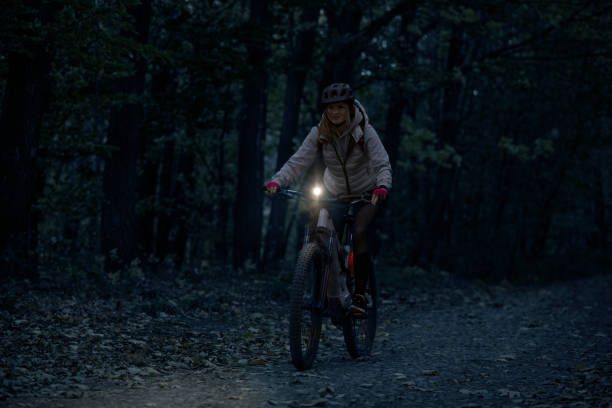
So opt for lithium-ion rechargeable LED lights with long run times to avoid unexpected darkness on evening or night rides.
Mounting Options
E-bike lights attach to your bike in various ways:
Front Light Mounting
- Handlebar Mounts – Easy to install clamp brackets allow positioning the headlight for optimum road illumination.
- Helmet Mounts – Attach a headlight to your helmet instead for lighting wherever you turn your head.
- Fork Mounts – Lower front fork placement casts less shadow and offers better peripheral lighting.
Rear Light Mounting
- Seat Post Mounts – Simple and secure way to attach the taillight at rear wheel height.
- Rack Mounts – Fits lights onto a rear rack for great visibility and protection from debris.
- Helmet Mounts – Also handy for rear lights to ensure constant visibility from all rear angles.
So try out a few mounting options with your new e-bike lights to determine the optimum position and beam angle.
E-Bike Light Features
Along with the basics above, some e-bike lights offer bonus features:
- Multiple Light Modes – Switch between steady beam and various flashing modes. Flashing grabs more attention.
- Daytime Running Lights – Low power LEDs for enhanced visibility on bright sunny days.
- Wireless Remote Switch – Allows turning lights on and off without removing hands from the handlebar.
- Automatic Light Sensor – Light automatically turns on when it gets dark outside.
- Integrated Turn Signals – Indicators make your turning intentions clear to surrounding traffic.
- App Connectivity – Bluetooth smart lights can be configured via a smartphone app.
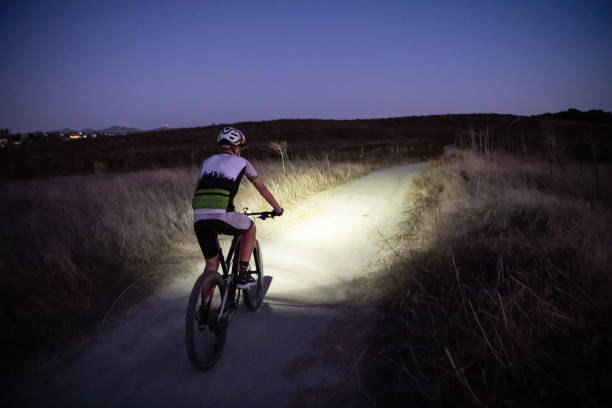
Consider useful add-on features when shopping the many new e-bike light models available.
E-Bike Light Regulations
Most areas have regulations surrounding bike lights and reflectors:
- Night Riding Requirements – Riding an e-bike after dark legally requires front (white) and rear (red) lights in most jurisdictions.
- Daytime Running Lights – Some regions mandate that e-bikes have daytime front and rear safety LEDs activated whenever riding.
- Reflectors – E-bikes must have front (white), rear (red), wheel, and often side (amber) reflectors installed. These reflect car headlights and other light sources.
- Lumens Limit – A few localities restrict lumens output to avoid dangerously bright lights. Most limit headlights to 1500 lumens or less.
So check your regional e-bike lighting regulations before choosing new lights. Fines can apply for non-compliant lighting.
DIY Installation Tips
Installing new lights on your e-bike is usually straightforward. Here are some tips:
- Ensure your light kit includes all necessary mounting hardware, brackets, and bands needed to attach the light(s) securely.
- Front lights mount best centered on the handlebar or angled slightly downward on the fork to avoid blinding oncoming traffic.
- Point the rear light straight back for maximum visibility. Attach to seat post just below seat height for optimal visibility.
- Make all mounting clamps snug enough not to twist or slide from vibration while riding.
- For wired lights, carefully route and fasten the wiring so it won’t catch on moving parts or get damaged.
- Sync wireless remote switches with headlights as described in the product manual. Check operation prior to riding.
- Fully charge lights before first use for maximum run time.
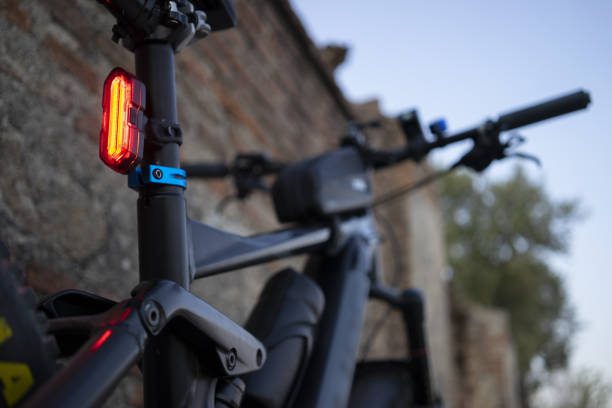
Installing good LED lights can take an e-bike from risky to road-ready after dark. Take time to properly mount them for reliable operation and long service life.
Riding Safely with E-Bike Lights
Quality LED lighting makes night riding safer – but you need to use proper caution as well:
- Ride slower in unlit areas or when outrunning your headlight beam distance. Slow down enough to stop within the lit area.
- Use flashing modes only in dark areas without oncoming bikes or vehicles. Otherwise, use steady beam modes.
- Glance frequently at your headlight beam to gain maximum preview of road conditions ahead.
- Brake earlier anticipating hazards like potholes that suddenly appear at the headlight’s range limit.
- Wear reflective and preferably light-colored clothing to stand out in other light sources like vehicle headlights.
- Carry a backup flashlight to get home safely in case your primary lights fail unexpectedly.
Smart riding practices complement the illuminating power of LED e-bike lights for safe and enjoyable rides after sunset!

Conclusion
E-bike lighting technology improves each year, making electric bicycles a more versatile and safe transportation option.
Equipping your e-bike properly for riding at night or in low light could literally be a lifesaver. We covered the main types of e-bike lights, what brightness levels work best, beam patterns and distance considerations, battery and charging factors, various mounting options, nifty feature add-ons, relevant regulations, product comparisons, DIY installation tips, and important safety practices for riding with lights.
There are abundant lighting choices on the market meeting any budget. So read through our guide to make informed selections if riding after dark.
Invest in quality LED headlights and taillights designed specifically for electric bikes. Stay safe and bright out there!’


